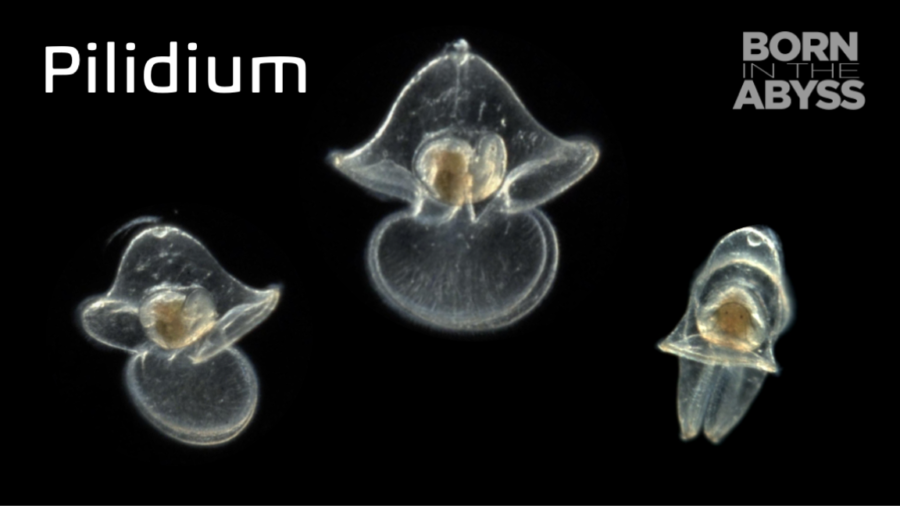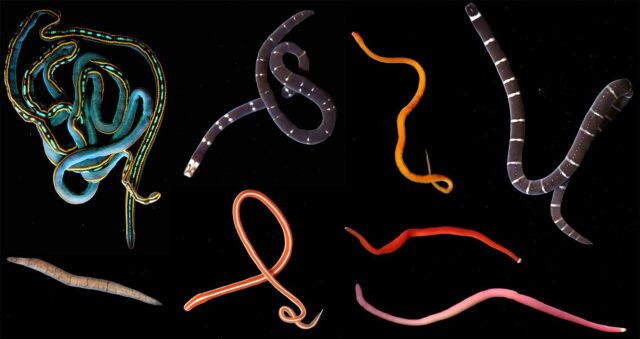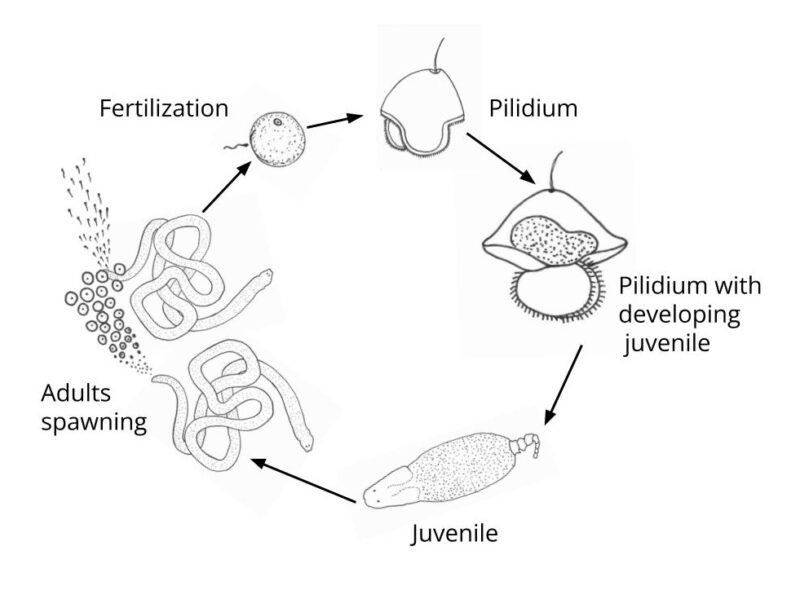
Pilidium
Plural: Pilidia
From the Greek word "pilidion," which means "felt cap"
Parents: Ribbon worms, or nemerteans
Food: Microscopic algae called phytoplankton
Size: About 500 microns tall = 0.5 millimeters = 0.02 inches

Diversity of adult Nemertean worms. Photo by Svetlana Maslakova.
Larval Form and Function
Watch this compilation video to learn more about the movement, anatomy, feeding, and metamorphosis of the pilidium larva.
Life Cycle of a Nemertean Worm

Drawn by Nadia Stoker
- The pilidium larval form is only seen in some nemertean worms.
- Adult nemerteans typically have separate sexes, with individuals being either male or female, but some species are hermaphrodites, with individuals able to produce both eggs and sperm.
- Adults spawn their gametes into the water where fertilization takes place and leads to the development of a pilidium larva.
- Pilidia exist for only a few weeks or less and feed on microscopic algae called phytoplankton. Adult nemerteans live for about a year and are carnivores, feeding on other animals.
- The transition from pilidium larva to juvenile nemertean is called a catastrophic metamorphosis, with the juvenile worm bursting out of the larval body. The larval body then becomes the juvenile’s first meal.
Larval Quest Activity
Developed by Nadia Stoker and Caitlin Plowman as outreach and education materials accompanying the Born in the Abyss film.
The Stephen Low Company
Oregon Institute of Marine Biology, University of Oregon
National Science Foundation

